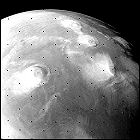 The unmanned NASA/JPL space probe Mariner 9 enters orbit around Mars, becoming the first human spacecraft to orbit another planet in the solar system. The probe begins a nearly year-long survey of the red planet, mapping over 70% of its surface at a much higher resolution than was achieved by the previous NASA Mars probes, Mariners 6 and 7. Mariner 9’s mapping mission is temporarily delayed by a global dust storm obscuring the entire planet when the orbiter arrives. Among its discoveries are Olympus Mons, the solar system’s largest volcano, and the gigantic canyon later named Valles Marineris. Mariner 9 also gathers images of Mars’ two moons, Phobos and Deimos.
The unmanned NASA/JPL space probe Mariner 9 enters orbit around Mars, becoming the first human spacecraft to orbit another planet in the solar system. The probe begins a nearly year-long survey of the red planet, mapping over 70% of its surface at a much higher resolution than was achieved by the previous NASA Mars probes, Mariners 6 and 7. Mariner 9’s mapping mission is temporarily delayed by a global dust storm obscuring the entire planet when the orbiter arrives. Among its discoveries are Olympus Mons, the solar system’s largest volcano, and the gigantic canyon later named Valles Marineris. Mariner 9 also gathers images of Mars’ two moons, Phobos and Deimos.
 NBC airs the tenth episode of Rod Serling’s Night Gallery, an anthology series of original short plays and short story adaptations hosted by Serling himself. Patrick O’Neal, Kim Stanley, Rudy Vallee, Pat Boone, and Larry Linville guest star.
NBC airs the tenth episode of Rod Serling’s Night Gallery, an anthology series of original short plays and short story adaptations hosted by Serling himself. Patrick O’Neal, Kim Stanley, Rudy Vallee, Pat Boone, and Larry Linville guest star.
 ITV airs the 25th episode of Ace Of Wands, starring Michael McKenzie, Tony Selby and Judy Loe. Oscar Quitak (Brazil) guest stars. This episode, like the rest of the series’ first two seasons, is now missing from the archives.
ITV airs the 25th episode of Ace Of Wands, starring Michael McKenzie, Tony Selby and Judy Loe. Oscar Quitak (Brazil) guest stars. This episode, like the rest of the series’ first two seasons, is now missing from the archives.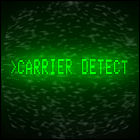 Computer engineer and recent MIT graduate Ray Tomlinson, working on the nascent ARPAnet project, adds minor new features to an experimental file transfer protocol and, in so doing, sends the first network e-mail. This first message doesn’t have far to travel – it arrives at another computer terminal in the same room – but it is the beginning of e-mail on ARPANET, a feature which is adopted so widely and so quickly that it accounts for 75% of all ARPANET data traffic just two years later. Tomlinson is also credited for inventing the user@destination e-mail address format.
Computer engineer and recent MIT graduate Ray Tomlinson, working on the nascent ARPAnet project, adds minor new features to an experimental file transfer protocol and, in so doing, sends the first network e-mail. This first message doesn’t have far to travel – it arrives at another computer terminal in the same room – but it is the beginning of e-mail on ARPANET, a feature which is adopted so widely and so quickly that it accounts for 75% of all ARPANET data traffic just two years later. Tomlinson is also credited for inventing the user@destination e-mail address format.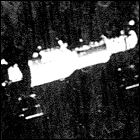 With its first crew having perished, prompting a far-reaching reorganization of the Soviet space program and its technology, the now-unmanned Salyut 1 space station is ordered to fire its thrusters, slowing it down to re-enter Earth’s atmosphere over the Pacific Ocean. With no immediate prospect of a new crew to inhabit it, the first space station intended for long-term occupation by a human crew barely lasts six months in orbit.
With its first crew having perished, prompting a far-reaching reorganization of the Soviet space program and its technology, the now-unmanned Salyut 1 space station is ordered to fire its thrusters, slowing it down to re-enter Earth’s atmosphere over the Pacific Ocean. With no immediate prospect of a new crew to inhabit it, the first space station intended for long-term occupation by a human crew barely lasts six months in orbit. Boasting a curved, futuristic fiberglass cabinet that truly looks like an alien art object, Nutting Associates’ arcade video game
Boasting a curved, futuristic fiberglass cabinet that truly looks like an alien art object, Nutting Associates’ arcade video game  The unmanned NASA/JPL space probe Mariner 9 enters orbit around Mars, becoming the first human spacecraft to orbit another planet in the solar system. The probe begins a nearly year-long survey of the red planet, mapping over 70% of its surface at a much higher resolution than was achieved by the previous NASA Mars probes, Mariners 6 and 7. Mariner 9’s mapping mission is temporarily delayed by a global dust storm obscuring the entire planet when the orbiter arrives. Among its discoveries are Olympus Mons, the solar system’s largest volcano, and the gigantic canyon later named Valles Marineris. Mariner 9 also gathers images of Mars’ two moons, Phobos and Deimos.
The unmanned NASA/JPL space probe Mariner 9 enters orbit around Mars, becoming the first human spacecraft to orbit another planet in the solar system. The probe begins a nearly year-long survey of the red planet, mapping over 70% of its surface at a much higher resolution than was achieved by the previous NASA Mars probes, Mariners 6 and 7. Mariner 9’s mapping mission is temporarily delayed by a global dust storm obscuring the entire planet when the orbiter arrives. Among its discoveries are Olympus Mons, the solar system’s largest volcano, and the gigantic canyon later named Valles Marineris. Mariner 9 also gathers images of Mars’ two moons, Phobos and Deimos.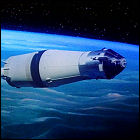 ABC premieres the two-hour TV movie
ABC premieres the two-hour TV movie 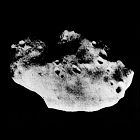 NASA’s Mariner 9 Mars orbiter becomes the first spacecraft to provide relatively close-up images of Mars’ innermost, larger moon, Phobos, from over 3,500 miles away. The irregular shape and heavily cratered surface of Phobos point up its likely origins as an asteroid that long ago came close enough to Mars to be captured into an orbit. Phobos (and its still unseen-at-close-range smaller sibling, Deimos) will be imaged at much closer range later in the 1970s by the Viking orbiters.
NASA’s Mariner 9 Mars orbiter becomes the first spacecraft to provide relatively close-up images of Mars’ innermost, larger moon, Phobos, from over 3,500 miles away. The irregular shape and heavily cratered surface of Phobos point up its likely origins as an asteroid that long ago came close enough to Mars to be captured into an orbit. Phobos (and its still unseen-at-close-range smaller sibling, Deimos) will be imaged at much closer range later in the 1970s by the Viking orbiters. Electric Light Orchestra‘s
Electric Light Orchestra‘s 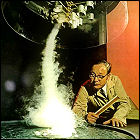 Dr. Tetsuya Theodore Fujita, a pioneering researcher in the formation and development of severe weather, proposes a scale for judging the intensity of tornadoes by the damage left behind. His five-point scale covers minimal tornadoes (F1) through storms capable of inflicting incredible damage (F5), with damage surveyed after a storm to determine the physical effects and the estimated wind speed needed to cause those effects. The Fujita Scale is adopted almost worldwide, remaining in widespread use by severe weather researchers and government agencies until it is supplanted by the more refined Enhanced Fujita Scale in the 1990s.
Dr. Tetsuya Theodore Fujita, a pioneering researcher in the formation and development of severe weather, proposes a scale for judging the intensity of tornadoes by the damage left behind. His five-point scale covers minimal tornadoes (F1) through storms capable of inflicting incredible damage (F5), with damage surveyed after a storm to determine the physical effects and the estimated wind speed needed to cause those effects. The Fujita Scale is adopted almost worldwide, remaining in widespread use by severe weather researchers and government agencies until it is supplanted by the more refined Enhanced Fujita Scale in the 1990s.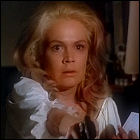 NBC airs the
NBC airs the